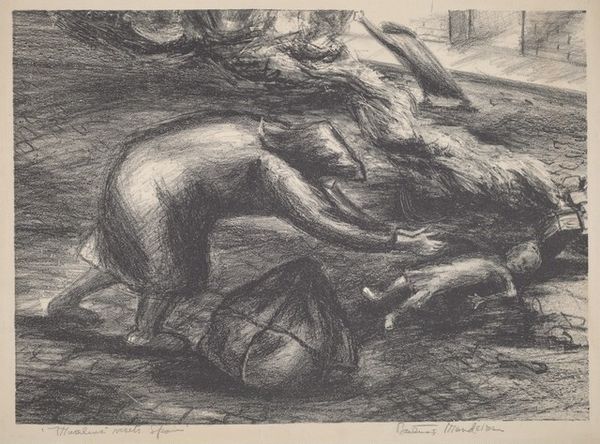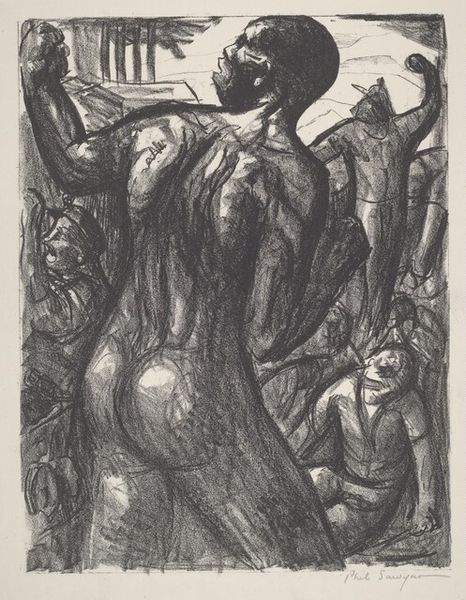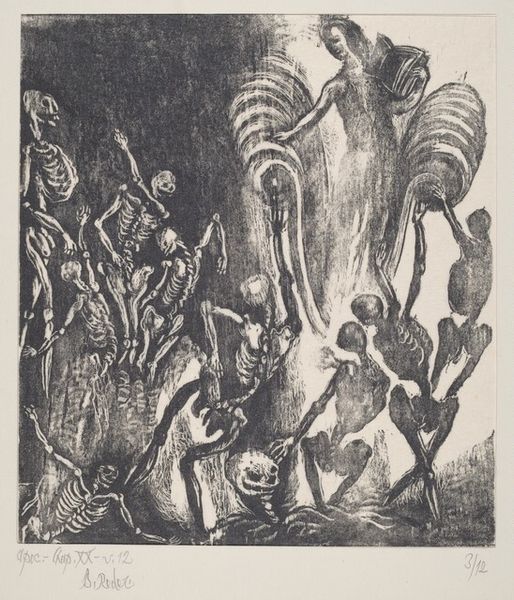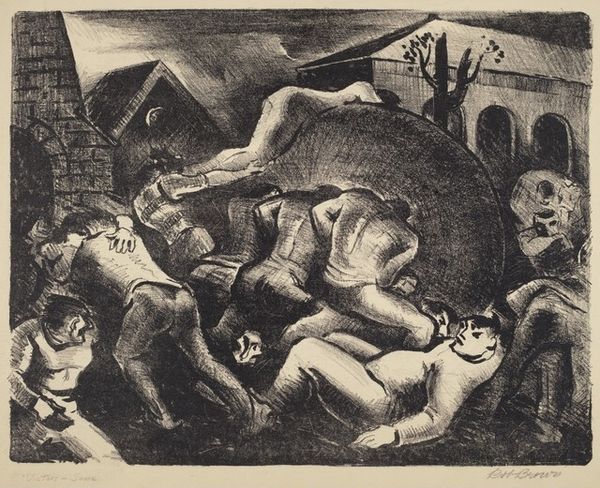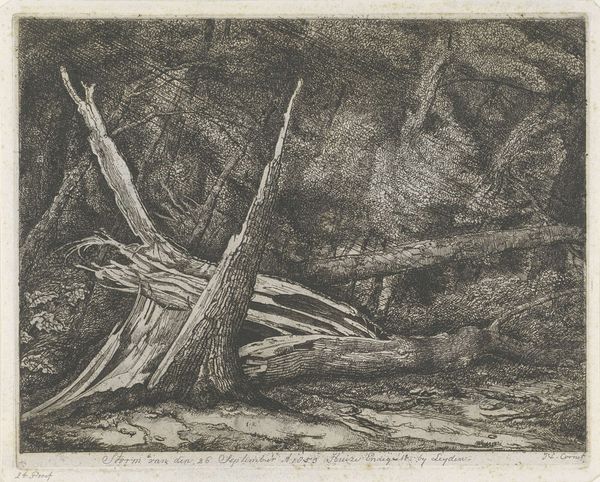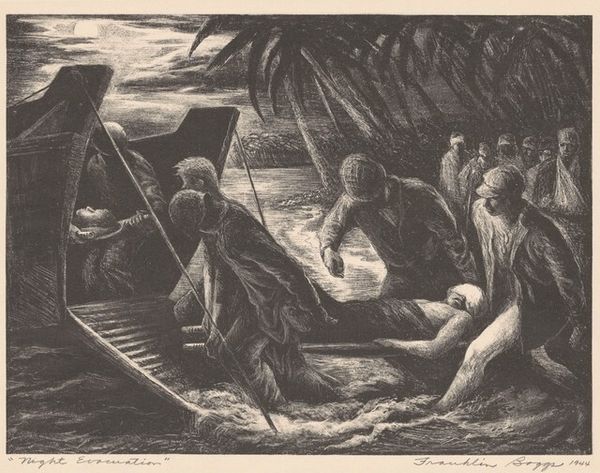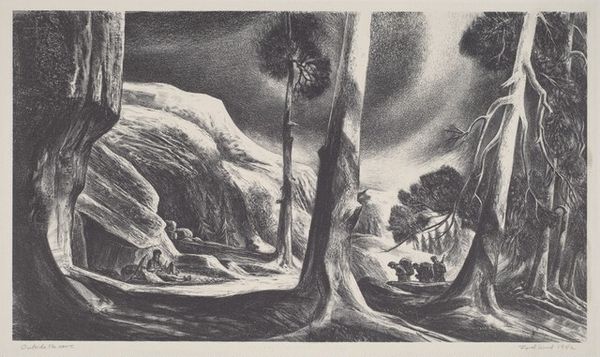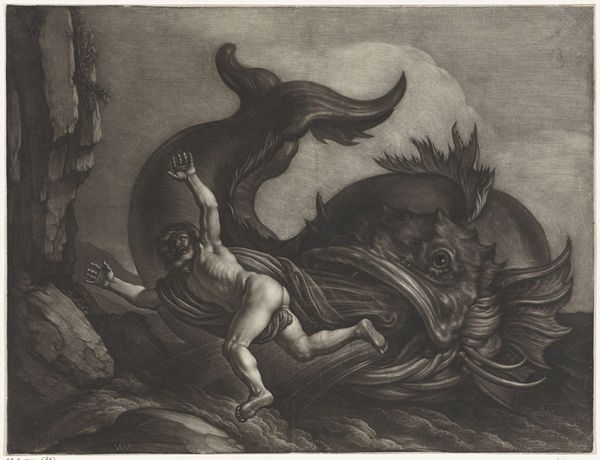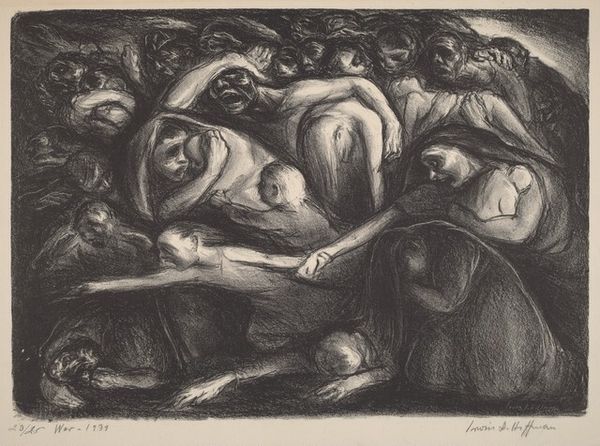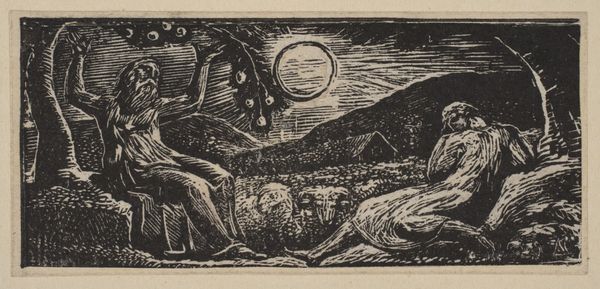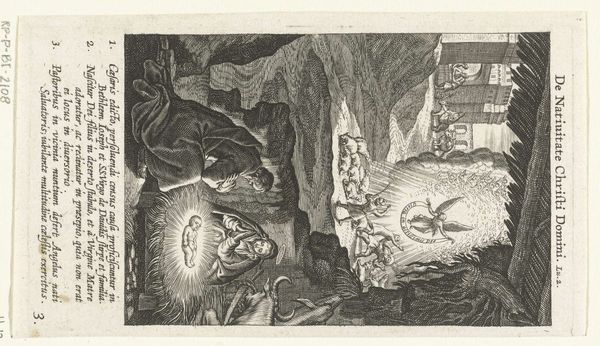
Dimensions: image: 226 x 298 mm sheet: 267 x 403 mm
Copyright: National Gallery of Art: CC0 1.0
Curator: This etching by Joseph Leboit, titled "Refugees," was created in 1938. The print seems to depict a family traversing a barren landscape. What are your initial impressions? Editor: Bleak, definitively bleak. The stark contrasts immediately evoke a sense of despair and hardship. Note the low horizon line, the figures hunched over; their very posture conveys a profound sense of vulnerability against this ravaged environment. Curator: Absolutely. Looking at Leboit's artistic choices, especially the printmaking technique, invites contemplation on how this image was made and for what audience. Etchings allowed for relatively inexpensive reproduction, hinting this image might have been intended for wide circulation, potentially as a commentary on displacement and social unrest during the period preceding the Second World War. The use of such material, like print for this very dark thematic matter is crucial. Editor: The swirling, almost chaotic lines comprising the sky and the rough textures used to depict the land itself create a palpable feeling of instability and decay. Semiotically, the ruins in the background signify not just physical destruction, but perhaps a breakdown of societal structures and norms. Consider the foreground elements as well - those gnarly roots, it feels like the earth itself is rejecting these figures. Curator: Right. These forms may symbolize their disconnection to any sort of 'homeland,' no land for those figures. We have to recognize the power structures impacting these figures as we reflect upon the act of creation inherent within etching and printing processes. Moreover, who has this image in their hand, who consumes this depiction, and under which context is critical. Editor: That is quite accurate; however, for me, the tension in "Refugees" arises from the relationship between light and shadow. The small highlights emphasize the family while all surrounding them plunges into darkness, amplifying their isolation. Curator: In viewing this poignant scene etched onto paper, it compels one to consider the human cost inherent when socio-political circumstances and material realities intersect in profound and unsettling ways. Editor: Indeed. Leboit masterfully employs visual language to create a timeless allegory of human suffering and displacement—a stark reminder of the enduring need for empathy and social action.
Comments
No comments
Be the first to comment and join the conversation on the ultimate creative platform.
